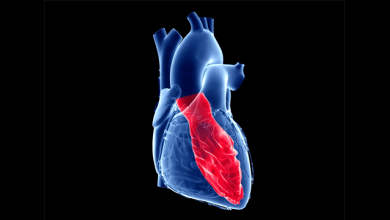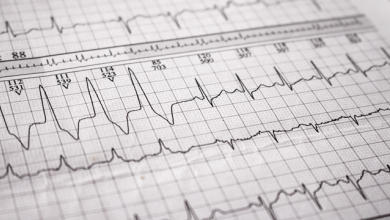Search results
Author(s):
Deniz Akdis
,
Corinna Brunckhorst
,
Firat Duru
,
et al
Added:
3 years ago
Arrhythmogenic cardiomyopathy (ACM) is usually referred to as arrhythmogenic right ventricular cardiomyopathy/dysplasia (ARVC/D).1A first historical description was made in 1736, whereas its first modern description dates back to 1982.2 Initially, ACM was thought to be an embryological malformation.3 Yet in recent years it became evident that the pathophysiology of an ongoing genetically…
View more
Author(s):
David D Spragg
,
Irfan Khurram
,
Saman Nazarian
Added:
3 years ago
Atrial fibrillation (AF) is a remarkably common arrhythmia, affecting roughly 6 % of patients over 65 years of age, with an estimated US prevalence of over two million patients.1 That prevalence is likely to increase as patients live longer, and will contribute to rising morbidity and mortality over time.2-4
Efforts to treat AF remain imperfect. Rhythm control approaches typically consist either…
View more
Author(s):
Eduardo Back Sternick
,
Mariana Faustino
,
Frederico Soares Correa
,
et al
Added:
3 years ago
Radiofrequency (RF) catheter ablation is currently the treatment of choice in patients with accessory pathways (APs) and Wolff– Parkinson–White syndrome, and is shown to have a success rate >95 %.1 APs usually have endocardial ventricular and atrial insertions, located close to the atrioventricular valve rings, making most endocardial catheter ablation procedures relatively straightforward and…
View more
Author(s):
Hongwu Chen
,
Kit Chan
,
Sunny S Po
,
et al
Added:
3 years ago
Ventricular tachycardia (VT) originating from the Purkinje system is the most common type of idiopathic left ventricular tachycardia (ILVT), especially among young Asians.1,2 It usually has a benign course. Research over the past two decades has deepened our understanding of the anatomy of the Purkinje system and the mechanisms of ILVT. This review focuses on the research history and anatomy of…
View more
Author(s):
Ramanan Kumareswaran
,
Francis E Marchlinski
Added:
3 years ago
Ventricular tachycardia (VT) is one of the most challenging medical conditions faced by cardiac patients and physicians treating them. Antiarrhythmic medications have limited effectiveness and are frequently poorly tolerated.1–4 Catheter ablation is increasingly used to treat patients successfully.1,5–7 Most VTs can be ablated endocardially but some require epicardial mapping and ablation…
View more
Author(s):
Raphael K Sung
,
Penelope A Boyden
,
Satoshi Higuchi
,
et al
Added:
2 years ago
Author(s):
Lluis Mont
,
Ivo Roca-Luque
,
Till F Althoff
Added:
2 years ago
Author(s):
Giulio Conte
,
Ulrich Schotten
,
Angelo Auricchio
Added:
3 years ago
The Risk of Atrial Arrhythmias in Inherited Primary Arrhythmia Syndromes
The inherited primary arrhythmia syndromes (IPAS) are a heterogeneous group of diseases caused by mutations in genes encoding for cardiac ion channels. People affected by one of these inherited diseases have no overt structural cardiac abnormalities but are at higher risk of sudden cardiac death due to the occurrence of…
View more
Author(s):
Gonca Suna
,
Greg J Mellor
Added:
4 months ago
Author(s):
Haipeng Tang
,
Shaojie Tang
,
Weihua Zhou
Added:
3 years ago
Cardiac resynchronisation therapy (CRT) is a widely-performed standard treatment for improving cardiac function and quality of life in patients with heart failure.1 After CRT, however, 30–40 % of patients do not experience improvements in left ventricular (LV) function and clinical symptoms.2–3 The key factors for increasing the response rate to CRT are identification of the optimal LV lead…
View more















 « First
« First